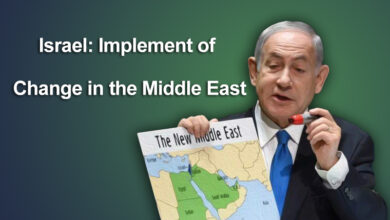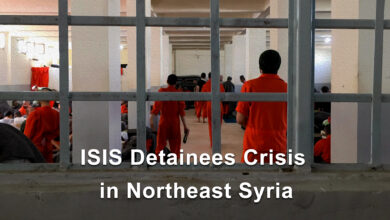Closing Semalka-Faysh Khabur crossing… challenges and goals

Areas of the Autonomous Administration of North and East Syria (AANES) are linked with the surrounding areas through several crossings, some of which are closed, such as the Tel Kochar (al-Ya’rubiyah) crossing with Iraq and the Nusaybin crossing with Turkey, in addition to three open crossings including the Semalka-Faysh Khabur crossing with the Kurdistan Region of Iraq, the Tabqa crossing with the Syrian regime-held areas, and Manbij crossing with the so-called Syrian opposition areas. Through these crossings, the AANES is working on securing the region’s needs of foodstuffs, medical supplies, building materials and other materials, in addition to the movement of citizens and humanitarian cases. However, the movement of these crossings is affected by political and military changes in Syria, and is linked to the relationship of the other side of the crossings such as the KRG in northern Iraq, the Turkish occupation state, the Syrian regime, and even Russia, i.e. according to their interests in the region, which put great pressure on the Autonomous Administration to secure the needs, since Turkey is with its mercenaries and the Syrian regime backed by Russia, always fight the AANES areas politically, economically and militarily, the matter creates many obstacles and challenges in front of the efforts made by the Autonomous Administration in providing goods and basic commodities to local markets and exporting the surplus of its goods outside its regions. This indicates the existence of a plan that aims to tighten the economic siege on the region, especially that the region is experiencing a drought that has negatively affected the agricultural sector, as well as impeding the growth of the local industrial sector by preventing the import of raw materials, spare parts, machinery, etc., trying to create a health crisis by preventing patients from traveling to the region to the KRG to receive treatment in the hospitals there.
Late in 2021, the authorities of the KRG (South Kurdistan) closed the Semalka crossing, which is one of the most vital crossings in the region for the movement of trade and humanitarian cases, as a result of the siege imposed on northeast Syria regions without providing convincing justifications to public opinion, as they invoked the protest march of the Revolutionary Youth Organization demanding hand over the bodies of a number of martyrs from Rojava (north and east Syria area) who were martyred in battles with the Turkish occupation army, as the regional government refuses to hand them over. The closure of the Semalka crossing along with the closure of the al-Walid crossing threatens to paralyze vital sectors and increases the suffering of five million people living in the areas of the Autonomous Administration. This indicates the existence of regional understandings to strangle the region and to put pressure on the Autonomous Administration to hand over the al-Yar’ubiyah crossing to the regime in exchange for opening it. The KRG authority is also working to impede the work of relief, charitable and service organizations that serve as a link between local communities and the international community, and to float the Syrian Kurdish National Council (ENKS) after its clinical death following its failure to hold its general conference and the decline in its effectiveness as a political force in the region, where it was noted that it increased its communication with the parties that stand behind the closure of the crossings with the areas of the Autonomous Administration, and the attempt to thwart the Autonomous Administration as the legitimate representative of all communities of north and east Syria.
Each country has its own agendas for this policy, Turkey’s strategy, for example, has become well known to the public opinion, as it will not hesitate to take advantage of any opportunity to strike the Autonomous Administration, knowing that closing the crossing itself harms the economy of its allies in northern Iraq (south Kurdistan). As for the regime and Russia, they are trying to restore the regime’s gradual control of the region.
In this context, the closure of the Semalka crossing can be considered as part of the strategy of using the crossings as a tool of blackmail against the areas of the Autonomous Administration to hand them over to the regime and thus undermine the gains of the communities of the region in managing their affairs and their attempts to involve the partners of the Turkish occupation army in the Autonomous Administration according to their impossible conditions, thus undermining its Syrian national identity; This issue will remain a candidate for many developments and complications as long as the active forces in the Syrian crisis persist in their insistence on placing their interests above the interests of the Syrian people.




